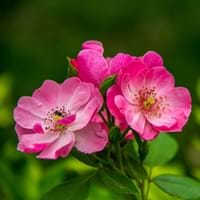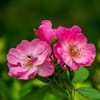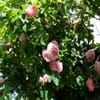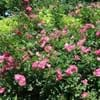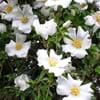Life Span
Perennial
Perennial
Type
Flowering Plants
Grass
Origin
Europe, India, Northwestern Africa, United States, Western Asia
China
Types
Not Available
Greenstripe Vivax, Moso, Weavers Bamboo, Oldhamii
Habitat
disturbed sites, Roadsides, stream banks, Woods
Subtropical climates, Wet Woods
USDA Hardiness Zone
Not Available
8-12
AHS Heat Zone
Not Available
12 - 7
Sunset Zone
Not Available
H1, H2, 8, 9, 14, 15, 16, 17, 18, 19, 20, 21, 22, 23, 24
Habit
Upright/Erect
Clump-Forming
Minimum Width
Not Available
Flower Color
Lavender, Light Pink, Pink, Purple, White
Pale White
Flower Color Modifier
Bicolor
Bicolor
Fruit Color
Non Fruiting Plant
Not Available
Leaf Color in Spring
Green, Gray Green, Dark Green
Green
Leaf Color in Summer
Green
Light Green
Leaf Color in Fall
Green, Gray Green, Dark Green
Green
Leaf Color in Winter
Green, Dark Green
Green
Leaf Shape
Pinnate
Acicular
Plant Season
Spring, Summer
Spring, Summer, Fall, Winter
Sunlight
Partial shade, Partial Sun
Full Sun, Partial Sun
Growth Rate
Medium
Very Fast
Type of Soil
Clay, Loam
Loam, Sand
The pH of Soil
Alkaline
Acidic, Neutral, Alkaline
Soil Drainage
Well drained
Well drained
Bloom Time
Spring, Summer
Not Available
Tolerances
Wet Site
Drought
Where to Plant?
Container, Ground, Pot
Container, Ground
How to Plant?
Seedlings, Stem Planting
Grafting, Seedlings, Stem Planting, Transplanting
Plant Maintenance
Medium
Medium
Watering Requirements
Keep the ground moist but not water-logged
Needs watering once a week, Use Mulches to help prevent water loss during hot and windy weather, Water Deeply
In Summer
Lots of watering
Lots of watering
In Spring
Moderate
Moderate
In Winter
Average Water
Average Water
Soil pH
Alkaline
Acidic, Neutral, Alkaline
Soil Type
Clay, Loam
Loam, Sand
Soil Drainage Capacity
Well drained
Well drained
Sun Exposure
Partial shade, Partial Sun
Full Sun, Partial Sun, Partial shade
Pruning
cut main flower spike, Remove dead branches, Remove dead or diseased plant parts
Do not prune during shooting season, Prune in late summer or fall, Remove damaged leaves
Fertilizers
Apply 10-10-10 amount, as it is a flowering plant, use high phosphorous content fertilizer
All-Purpose Liquid Fertilizer
Pests and Diseases
Grasshoppers
Black sooty mold, Mealybugs, Mosaic viruses, Powdery mildew, pythogens, Stem rot
Plant Tolerance
Drought, Wet Site
Drought
Flower Petal Number
Single
Single
Foliage Texture
Medium
Coarse
Foliage Sheen
Matte
Matte
Attracts
Birds, Small mammals
Beetles, Bugs, Mites
Allergy
Constipation, Diarrhea, Headache, Heartburn, Nausea, Pain and fatigue, Stomach pain, Vomiting
allergic conjunctivitis, Asthma, Rash, Respiratory distress
Aesthetic Uses
Bonsai, Bouquets, Cottage Garden, Showy Purposes
Showy Purposes
Beauty Benefits
Good for skin, Skin Problems
Not Available
Environmental Uses
Air purification, Food for birds
Agroforestry, Air purification, No fertilizer, pesticides, or herbicides needed
Medicinal Uses
Astringent, Diuretic, Laxative, Vitamin C
Aging, Anti-fungal, Antispasmodic, Digestive disorders, Obesity
Part of Plant Used
Flowers, Rose Hip
Stem, Tree trunks
Other Uses
Making Perfumes, Used as Ornamental plant, Used for its medicinal properties
Economic Purpose, Traditional medicine, Used As Food, Used for woodware, Used in Furniture, Used in paper industry
Used As Indoor Plant
Yes
No
Used As Outdoor Plant
Yes
Yes
Garden Design
Feature Plant, Mixed Border
Feature Plant, Screening / Wind Break, Tropical
Botanical Name
Rosa Arkansana
BAMBUSA beecheyana
Common Name
Prairie Rose, Wild Prairie Rose
Beechey's Bamboo, Clumping Bamboo
In Hindi
Rosa arkansana
बांस
In German
Rosa arkansana
Verklumpung Bambus
In French
Rosa arkansana
clumping Bamboo
In Spanish
Rosa arkansana
clumping Bamboo
In Greek
Rosa arkansana
συσσώρευση μπαμπού
In Portuguese
Rosa arkansana
bambu aglutinação
In Polish
Rosa arkansana
zbicie bambus
In Latin
Rosa arkansana
clumping Bamboo
Phylum
Magnoliophyta
Magnoliophyta
Class
Magnoliopsida
Liliopsida
Clade
Angiosperms, Eudicots, Rosids
Angiosperms, Commelinids, Monocots
Tribe
Not Available
Bambuseae
Subfamily
Not Available
Bambusoideae
Number of Species
Not Available
Not Available
Properties of Prairie Wild Rose and Clumping Bamboo
Wondering what are the properties of Prairie Wild Rose and Clumping Bamboo? We provide you with everything About Prairie Wild Rose and Clumping Bamboo. Prairie Wild Rose has thorns and Clumping Bamboo doesn't have thorns. Also Prairie Wild Rose does not have fragrant flowers. Prairie Wild Rose has allergic reactions like Constipation, Diarrhea, Headache, Heartburn, Nausea, Pain and fatigue, Stomach pain and Vomiting and Clumping Bamboo has allergic reactions like Constipation, Diarrhea, Headache, Heartburn, Nausea, Pain and fatigue, Stomach pain and Vomiting. Compare all the properties and characteristics of these two plants. Find out which of these plant can be used as indoor plant. If you are interested to decorate your house and garden, find out aesthetic uses, compare them and select the plant which will beautify your surrounding. Along with beautification, try comparing medicinal and edible uses of Prairie Wild Rose and Clumping Bamboo and you can choose the plant having best and most benefits.
Season and Care of Prairie Wild Rose and Clumping Bamboo
Season and care of Prairie Wild Rose and Clumping Bamboo is important to know. While considering everything about Prairie Wild Rose and Clumping Bamboo Care, growing season is an essential factor. Prairie Wild Rose season is Spring and Summer and Clumping Bamboo season is Spring and Summer. The type of soil for Prairie Wild Rose is Clay, Loam and for Clumping Bamboo is Loam, Sand while the PH of soil for Prairie Wild Rose is Alkaline and for Clumping Bamboo is Acidic, Neutral, Alkaline.
Prairie Wild Rose and Clumping Bamboo Physical Information
Prairie Wild Rose and Clumping Bamboo physical information is very important for comparison. Prairie Wild Rose height is 300.00 cm and width 200.00 cm whereas Clumping Bamboo height is 1,070.00 cm and width Not Available. The color specification of Prairie Wild Rose and Clumping Bamboo are as follows:
Prairie Wild Rose flower color: Lavender, Light Pink, Pink, Purple and White
Prairie Wild Rose leaf color: Green, Gray Green and Dark Green
Clumping Bamboo flower color: Pale White
- Clumping Bamboo leaf color: Green
Care of Prairie Wild Rose and Clumping Bamboo
Care of Prairie Wild Rose and Clumping Bamboo include pruning, fertilizers, watering etc. Prairie Wild Rose pruning is done cut main flower spike, Remove dead branches and Remove dead or diseased plant parts and Clumping Bamboo pruning is done Do not prune during shooting season, Prune in late summer or fall and Remove damaged leaves. In summer Prairie Wild Rose needs Lots of watering and in winter, it needs Average Water. Whereas, in summer Clumping Bamboo needs Lots of watering and in winter, it needs Average Water.
